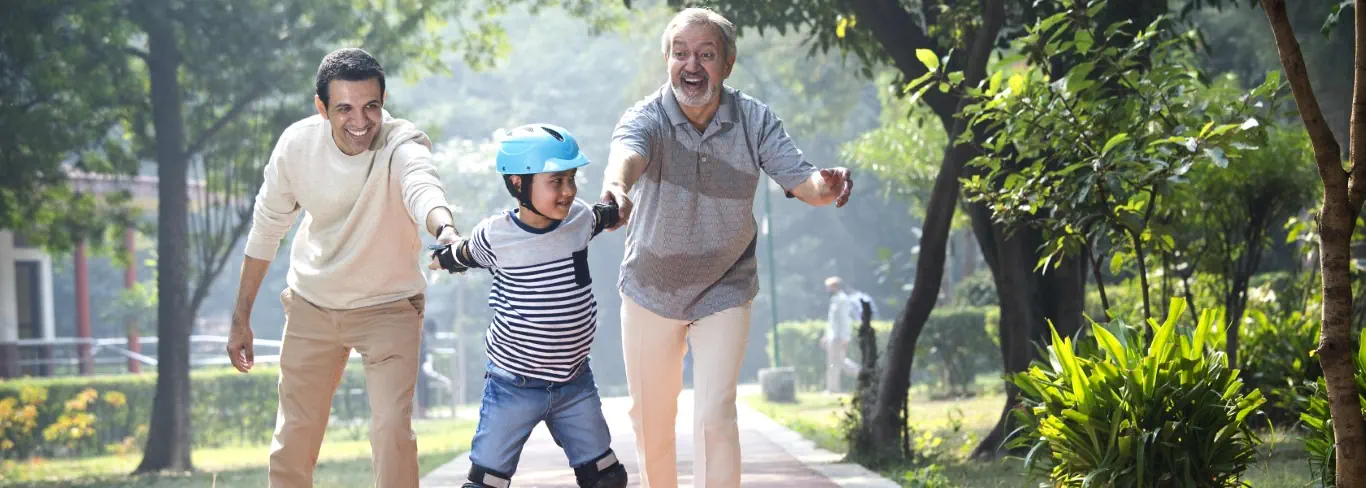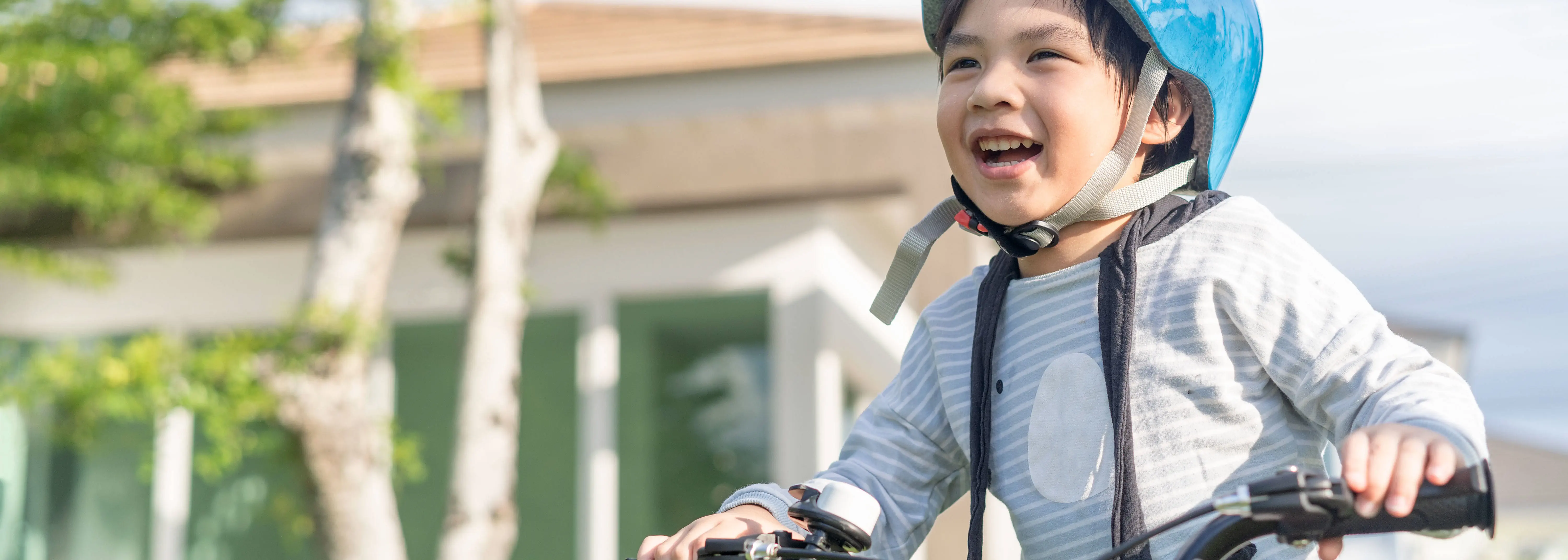Participation in sports and other outdoor physical activities are vital for children in their growing years. These activities contribute greatly to their physical development and mental growth throughout their childhood.
Therefore, it is essential to learn how to recognise common types of sports injuries in children, treatment options available, and preventive measures to ensure our children’s safety while playing.

Common sports injuries in children
Overuse injuries
These injuries occur when the child performs the same activity repeatedly. This may result in inflammation and pain in the affected areas, causing injuries.
- Anterior cruciate ligament (ACL) tear is a commonly found injury in children who participate in sports activities involving jumping movements.
- Turf toe occurs when the big toe is hyperextended, mainly due to playing sports on artificial turf. The main symptom of turf toe includes pain and swelling of the big toe or pain while walking. Children who play sports such as basketball, soccer and football are more susceptible to this injury.
- Little league shoulder happens when the growth plate in the shoulder is damaged due to repetitive throwing movements. This is a commonly known overuse injury in cricket and baseball players. The symptoms are a limited range of motion, shoulder pain, tenderness in the shoulder region, etc.
- Little league elbow is an injury caused due to repetitive throwing motions commonly found in young basketball players. Little league elbow affects the growth plate in the elbow. The commonly known symptoms include a limited range of motion and pain in the inner side of the elbow.
- Shin splints happen to children who participate in sports which involve rapid jumping and running, such as football and soccer. Shin splints cause inflammation and pain along the shin bone in the lower leg. This is caused by overuse that leads to small tears in the tendons and muscles that attach to the tibia.
Acute injuries
These include fractures, sprains, dislocations, bruises, and strains and are usually a result of traumas or sudden impact accidents.
- Concussions happens when the brain undergoes trauma. Some of the symptoms include memory loss, headache, confusion, etc.
- Ankle sprains occur when the ligaments supporting the ankles get torn or stretched due to a tear or twist. Ankle sprains most commonly occur in sports activities that involve running such as rugby, tennis, basketball, football, etc.
- Groin strains can happen in specific sports when the muscles in the inner thighs get torn.
- Contusions are cases where the blood vessels under the skin get damaged.
- Fractures commonly occur in wrists, arms, and legs in children.
- Dislocations may occur in high-intensity sports when a sudden impact causes a joint bone of alignment.
Reinjuries
These are injuries that happen in the same place where a prior injury occurred.
- Concussions is a type of brain injury caused by a blow or bump to the head. Concussions often happen in sports such as hockey, football, rugby, and basketball.
- Overuse injuries
- Recurrent ankle sprains
- Recurrent dislocations
- Spondylolysis is a weakness or stress fracture that occurs in one of the vertebrae (small bones which constitute the spinal column). It is caused due to intense and repetitive stress on the vertebrae, causing minor bone fractures. This condition is commonly observed in participants involved in sports activities such as football, weightlifting and gymnastics.
Causes of sports injuries in children
There are usually multiple factors which cause sports injuries in children.
- Inadequate stretching and warm up
- Improper or poor techniques or mechanics
- Insufficient or lack of proper coaching or supervision
- Poorly maintained playing surface
- Improper sports equipment or shoes
- Fatigue or lack of enough rest
- Lack of enough nutrition, poor hydration
- Lack of conditioning
- Insufficient muscle strength
- Pre-existing injuries
- Playing through pain or ignoring
Sports injuries treatment in children
Sports injuries are treated based on their severity and type. If the child has severe injury such as a concussion or fracture, they should immediately be rushed to the Accident & Emergency department at the nearest hospital or immediate medical attention.
For treating minor sports injuries in children, the R.I.C.E. method is one of the most simple and effective treatment plans to speed up healing.
- Rest (R): The child should be resting adequately for the injury to heal.
- Ice (I): Applying a cold pack or a bag of ice (wrapped in towel) on the affected area can help to reduce the swelling. The ice pack should be used for 20-minutes each time, several times a day.
- Compression (C): The best way of applying compression is by using a brace or bandage to reduce swelling and support the injured area.
- Elevation (E): Use pillows or slings to keep the injured area above the chest level to ensure faster healing.
Post injury, parents and caregivers should ensure that the initial injury is fully healed before the child gets back into sports. This can be implemented through proper conditioning and rehabilitation programmes.
Additionally, sports coaches should ensure that the child has proper sports equipment and is meticulously trained before getting back into sports.

Sports injuries prevention in children
- Always use proper equipment
- Use proper equipment such as helmets, pads, shoes, mouthguards with the correct fit and size.
- Ensure that the equipment have the necessary safety certifications.
- Always check with your child's coach about the best-suited ones if you have doubts about the safety equipment.
- Play on safe surfaces
- The playing surface should be well-maintained and safe to avoid injuries caused by falling, tripping, or slipping.
- Carefully inspect the field to ensure it has no holes or ruts.
- Avoid overdoing
- Make sure that your child does not overdo sports or engage in heavy routines.
- Limit the number of sports they play weekly.
- Adult supervision
- This is a crucial aspect of preventing sports-related injuries, especially in small children and pre-teens.
- Supervision can significantly help children participate in safe activities while ensuring that they use proper equipment and techniques.
- Ensure that the sports instructors are well knowledgeable in CPR and first aid techniques and enforces safe playing rules.
- Warm up before every game
- Children should be taught the importance of stretching and warming up before a game.
- They should also be taught cooling-up exercises after a game for quick relaxation.
Make an appointment at Pantai Hospitals
If you notice a sports-related injury in your child that raises concerns and may require medical attention, please seek immediate medical attention at the Accident and Emergency (A&E) department at your nearest Gleneagles Hospital.
Speak to your doctor to know more about the symptoms, diagnosis, and treatment for orthopaedic conditions. The caring and multidisciplinary team of healthcare professionals are available for consultation and to provide the best care.
Get in touch with us to book an appointment with an Orthopaedic specialist at Gleneagles Hospital today.


